The Reign E+ 1 electric mountain bike is Giant’s most capable, enduro-focused ebike thanks to 160mm of dual-link Maestro rear-suspension travel, a mullet wheel setup (29in front, 27.5in rear) and slack, long and low geometry.
The bike received an overhaul in 2021 for the 2022 model year, which addressed some of the criticisms of the older model, leading to its inclusion in our 2022 eMTB Bike of the Year category.
It’s fitted with Giant’s SyncDrive Pro motor, touting 85Nm of torque and 250w of power, and paired with a 625Wh battery pack. Giant has co-developed the motor with Yamaha to work with the brand’s Maestro suspension.
Damping is taken care of by Fox’s 38 and Float X2 Performance Elite forks and shock, while braking and shifting are thanks to Shimano XT M8100 parts. Except for the Maxxis tyres, most of the Giant’s other parts are made in-house.
Giant Reign E+ 1 frame and suspension

Built from Giant’s ALUXX SL 6011 aluminium, the Reign is claimed to have a best-in-class strength-to-weight ratio.
Giant claims unique welding technology gives the bike its ride quality. It features internally routed cables through the down tube and chainstays, and has a bottle cage mount inside the front triangle.
It uses SRAM’s UDH, has a Boost 12x148mm rear axle, and there’s in-built chain slap protection on the chainstay.
Hidden inside the down tube is the battery, while the top tube houses an integrated mode and battery life display. The motor is cradled beneath the shock and lower suspension linkage with enough space for a straight seat tube to give maximum dropper-post insertion.
The Reign E+ 1 is built around a mullet wheel setup, where the front wheel has a 29in diameter and the rear 27.5in.
Suspension kinematics
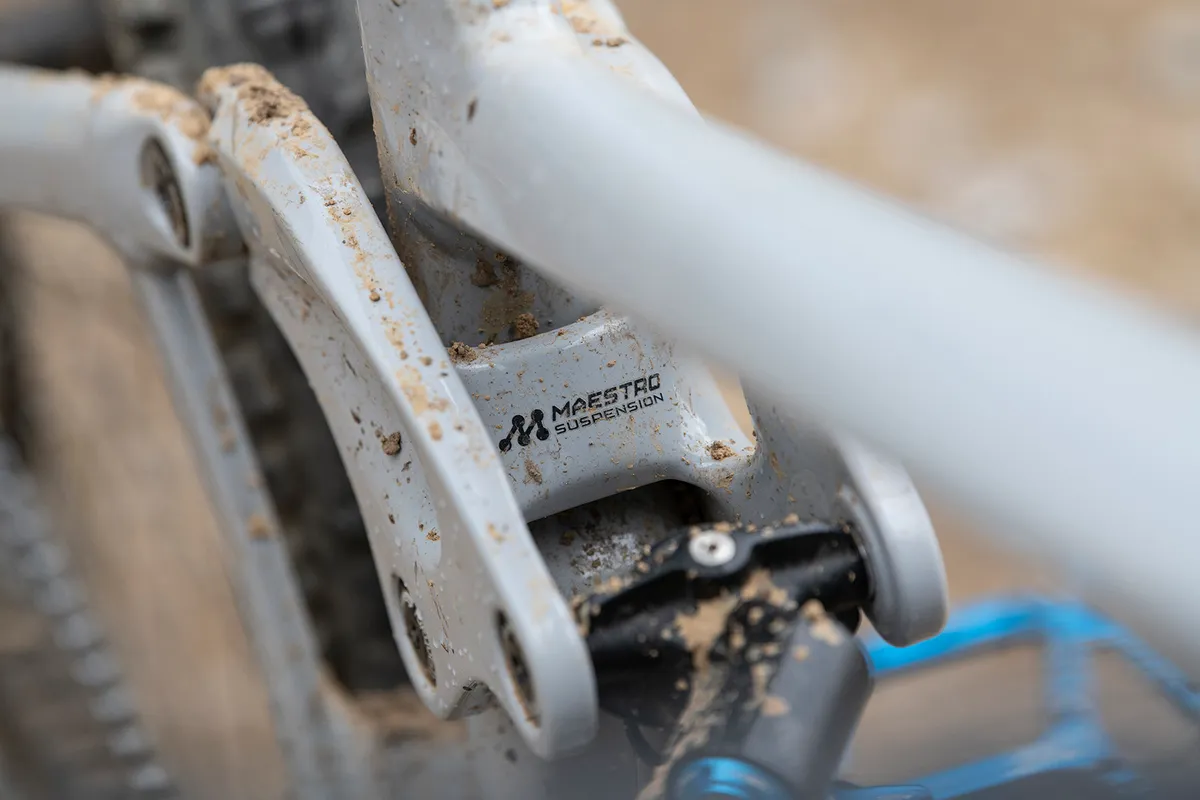
Giant’s Maestro suspension system provides 160mm of travel, where two co-rotating links join the shock, swingarm and mainframe. This creates a floating pivot point that Giant has tuned to give what it claims is super-plush, fully active suspension that’s efficient when pedalling and independent from braking forces.
According to Giant’s own data, anti-squat figures sit at or just below the 100 per cent mark in all gear ratios at 30 per cent sag, then drop lower as the bike compresses. This means pedal kickback is kept to a minimum and should help maintain suspension compliance while pedalling.
Anti-rise starts at 72.5 per cent at full travel, dips to 66 per cent mid-travel, and rises again to 70 per cent at bottom-out. On the trail, this means the braking forces are more likely to extend than compress the suspension, potentially making it feel active on the brakes.
Using Giant’s data, I calculated the Reign to have 25 per cent progression throughout its travel. This is relatively progressive, and means it should be well suited to coil-sprung shocks with linear spring rates, as well as air-sprung shocks with fewer volume-reducer spacers.
Giant Reign E+ 1 battery and motor
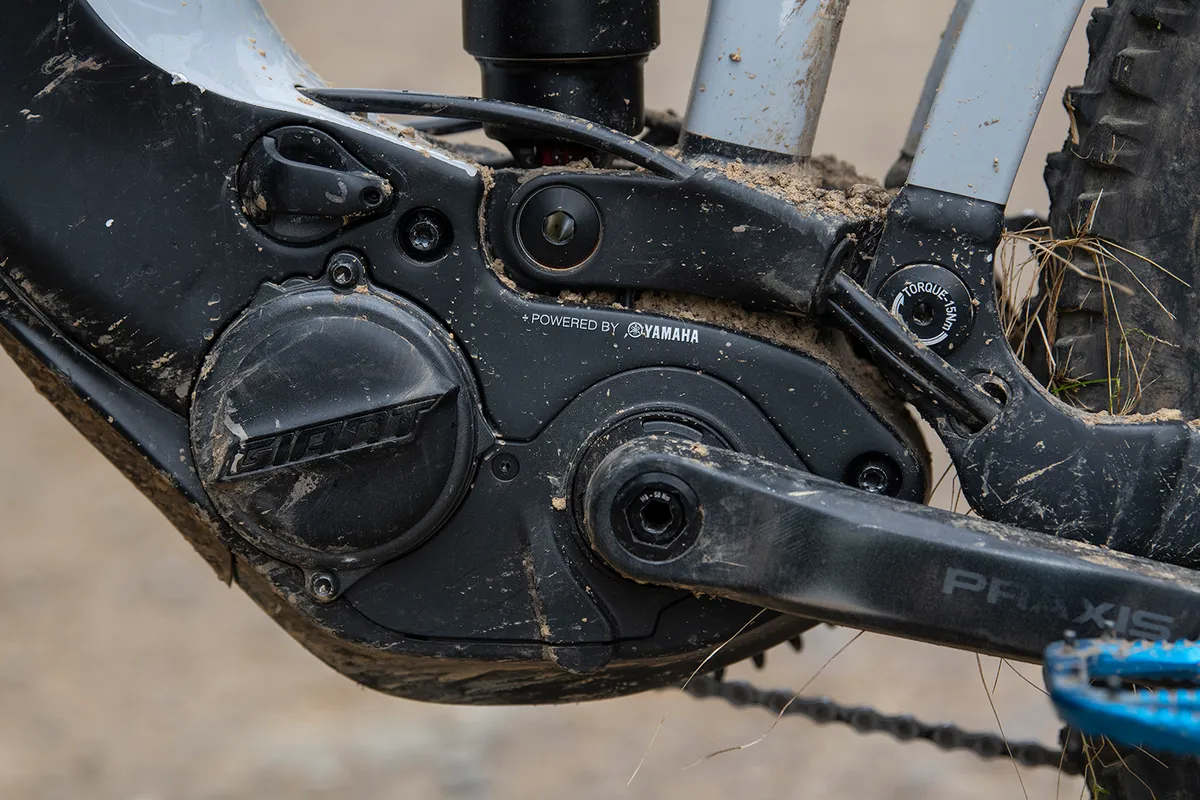
Giant’s SyncDrive Pro motor (also known as Yamaha’s PW-X3) has been co-developed with the Japanese brand and was designed around the Maestro suspension layout.
It’s claimed to provide 85Nm of torque and 250w of power, and has been tuned specifically for off-road use, offering quick responses to rider pedal inputs. It’s claimed to have a narrow 169mm Q-factor, too.
The Giant/Yamaha motor is paired with Giant’s EnergyPak Smart 625 battery pack, stored in the bike’s down tube. This has a 625Wh capacity and is claimed to provide up to 190km of assistance.
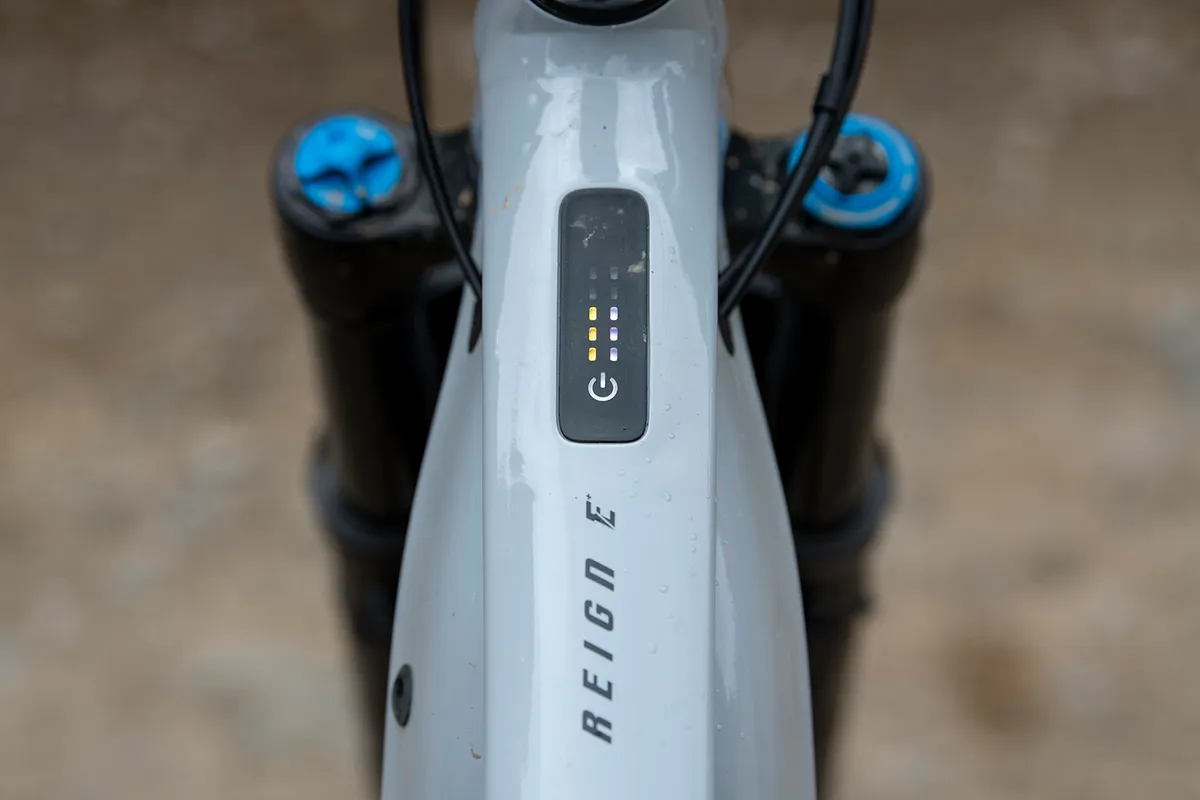
It has five stock modes, indicated by different colours on the RideControl Go top-tube mounted display.
The modes’ outputs are also tunable in Giant’s RideControl smartphone app that connects to the bike using Bluetooth.
Each mode employs Smart Assist technology, where sensors are used to calculate the exact torque and power a rider needs – resulting, Giant claims, in a “smooth and natural” experience.
Giant Reign E+ 1 geometry
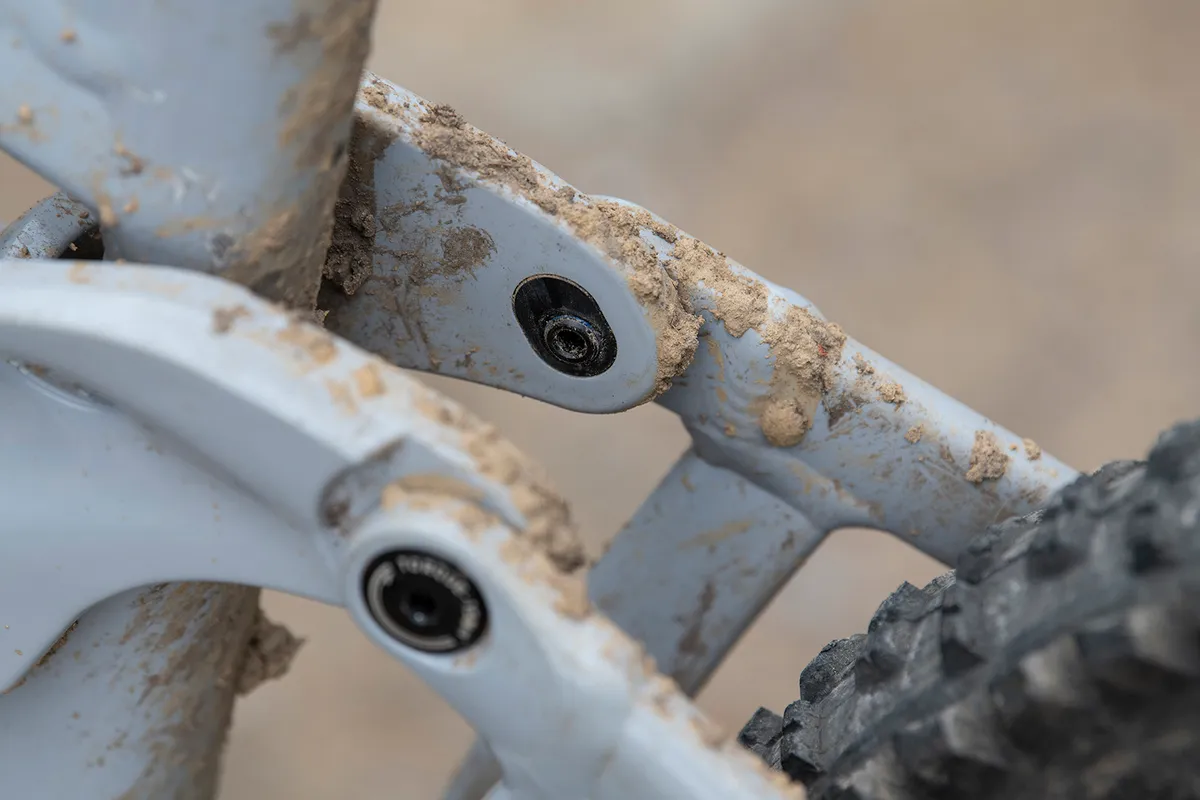
The Reign E+’s geometry got an overhaul in 2021, receiving some important updates, the most notable being shorter chainstays to improve handling.
Each bike in the four-size range (from small to extra-large) has a high and low setting, controlled by a flip chip in the upper rocker to swingarm pivot.
Swapping the chip from low to high changes the seat tube and head tube angles by 0.8 degrees and lowers the bottom-bracket height by 10mm.
For my 178cm-tall frame, I tested the large bike with a 475/480mm (low/high) reach. Its seat tube angle is 76.7/77.5 degrees (low/high), and the head tube angle is 63.7 degrees or 64.5 degrees, depending on the flip chip’s position.
The chainstays sit at 454mm, a figure very similar to the other bikes on test. The bottom bracket was 329mm in the low setting and 338mm in the high.
On paper, the Reign’s figures would suggest impeccable descent-focused performance, matching the numbers of some of the fastest and most capable enduro bikes.
| | S | M | L | XL | ||||||||
|---|---|---|---|---|---|---|---|---|---|---|---|---|
| Low | High | Low | High | Low | High | Low | High | |||||
| Seat angle (degrees) | 76.7 | 77.5 | 76.7 | 77.5 | 76.7 | 77.5 | 76.7 | 77.5 | ||||
| Head angle (degrees) | 63.7 | 64.5 | 63.7 | 64.5 | 63.7 | 64.5 | 63.7 | 64.5 | ||||
| Chainstay (mm) | 457 | 455 | 454 | 454 | 454 | 454 | 454 | 454 | ||||
| Seat tube (mm) | 400 | 400 | 425 | 425 | 450 | 450 | 475 | 475 | ||||
| Top tube (mm) | 569 | 568 | 595 | 594 | 622 | 621 | 649 | 648 | ||||
| Head tube (mm) | 100 | 100 | 100 | 100 | 110 | 110 | 120 | 120 | ||||
| Bottom bracket drop (mm) | 25 | 15 | 25 | 15 | 25 | 15 | 25 | 15 | ||||
| Wheelbase (mm) | 1,209 | 1,210 | 1,236 | 1,237 | 1,265 | 1,266 | 1,295 | 1,296 | ||||
| Standover (mm) | 785 | 789 | 772 | 776 | 771 | 775 | 768 | 772 | ||||
| Stack (mm) | 636 | 632 | 635 | 632 | 645 | 641 | 654 | 650 | ||||
| Reach (mm) | 425 | 430 | 450 | 455 | 475 | 480 | 500 | 505 | ||||
Giant Reign E+ 1 specifications
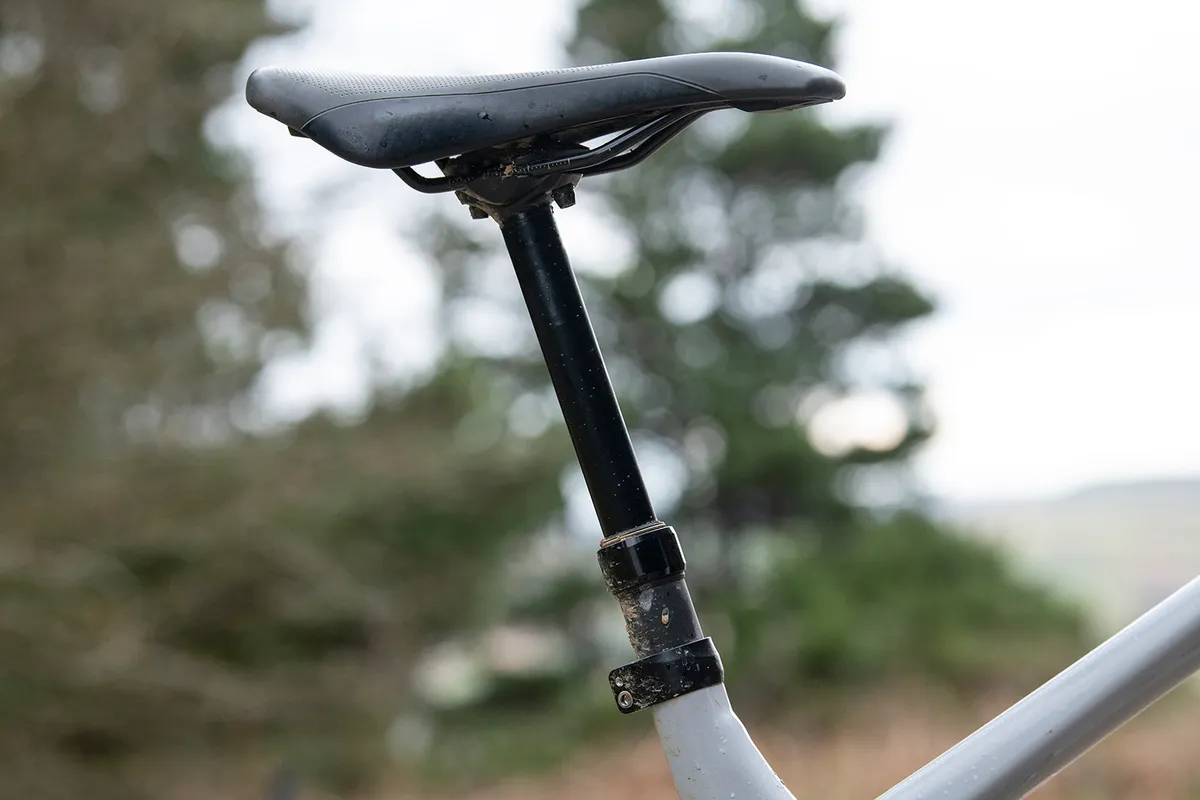
Arguably, the Reign E+ 1 is specced with top-performing parts where they’re most needed.
Up front is a 170mm-travel Fox 38 Performance Elite with GRIP2 damper, mated with a Float X2 Performance Elite rear shock.
It features Shimano’s M8100 XT drivetrain and four-piston XT brakes.
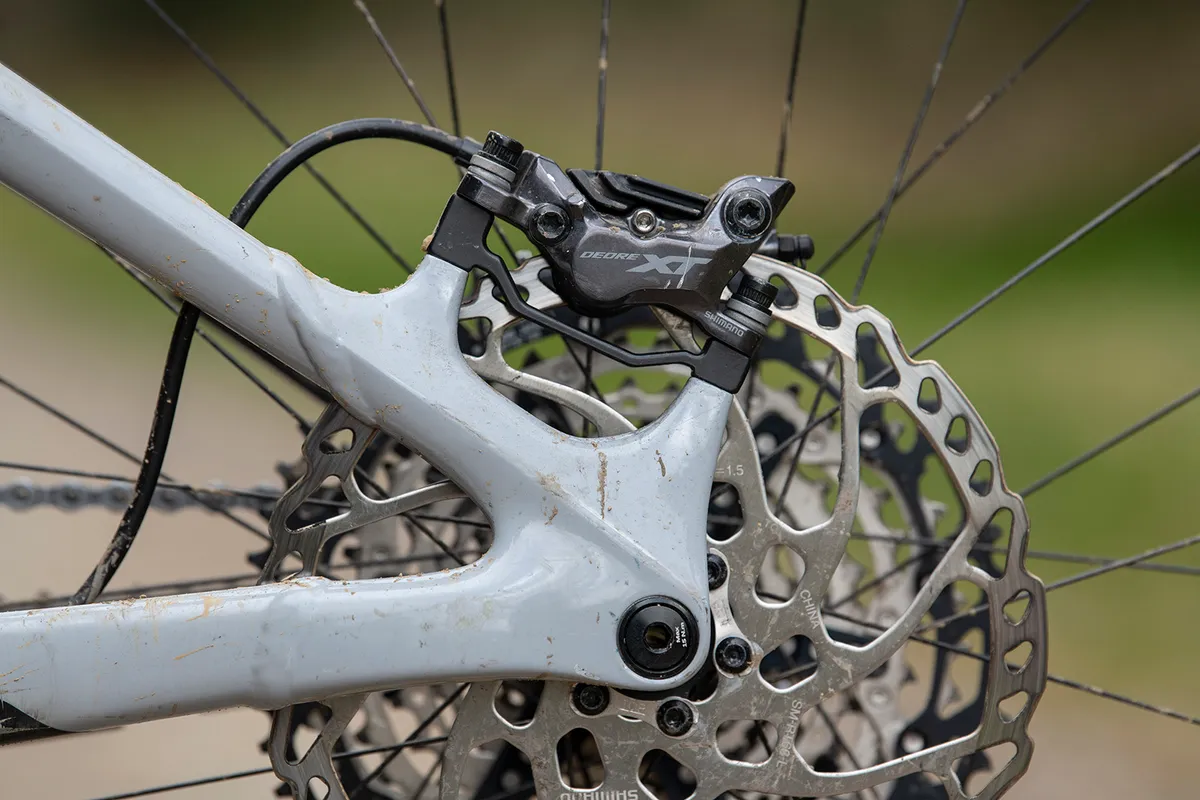
Elsewhere, Giant has fitted house-brand Contact components, including the bar, stem, grips and 170mm-travel dropper post.
Giant-branded 30mm-wide rims and hubs feature, and these are wrapped in Maxxis rubber, with an Assegai 29x2.6in EXO+ casing 3C MaxxTerra compound at the front and a High Roller II 27.5x2.5in DoubleDown casing 3C MaxxTerra compound at the rear.
My large test bike weighed 25.23kg without pedals.
Giant Reign E+ 1 ride impressions
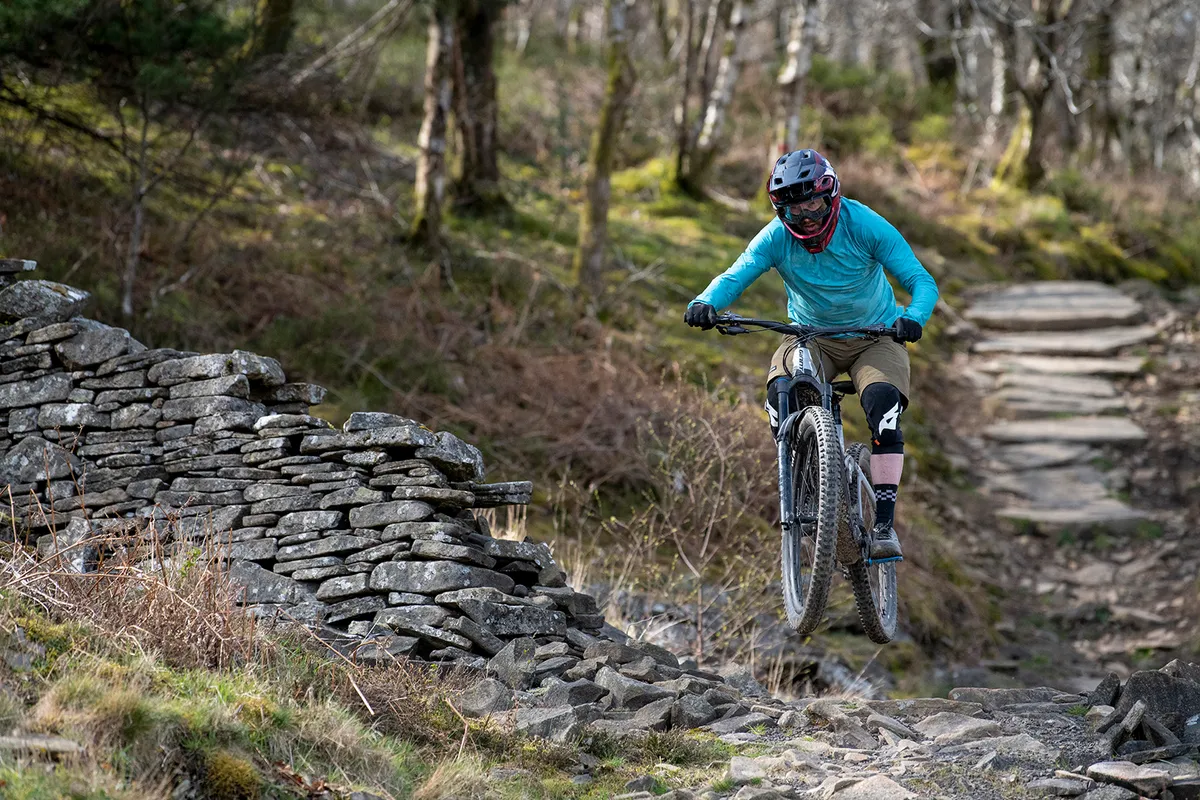
I tested the Reign in Scotland’s Tweed Valley on the trails used for the UK’s round of the Enduro World Series.
Conditions were variable over the test period, ranging from mid-winter snow through to dusty spring heat.
Giant Reign E+ 1 setup
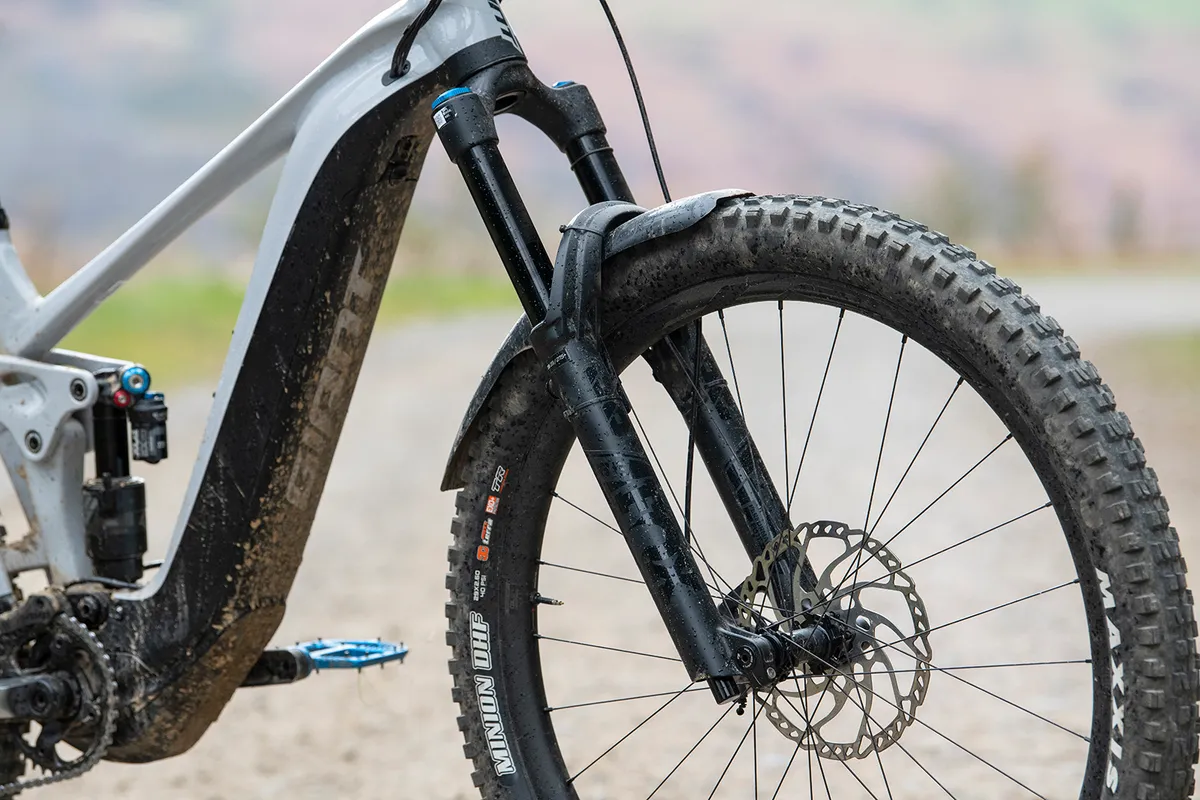
Giant doesn’t provide a setup guide for the bike, which meant I set it up according to my preferences.
I inflated the fork to 98psi and installed three volume-reducer tokens, giving me 35mm or 20.5 per cent sag. I set all rebound and compression adjustments to fully open.
I initially inflated the shock’s spring to 180psi, but later increased that to 185psi and added +4 clicks of low-speed compression from fully open to help prop up the rear end.
I had a single volume-reducer spacer installed, but all the damping adjustments were set to fully open. This gave me 19mm/30.5 per cent of shock stroke sag.
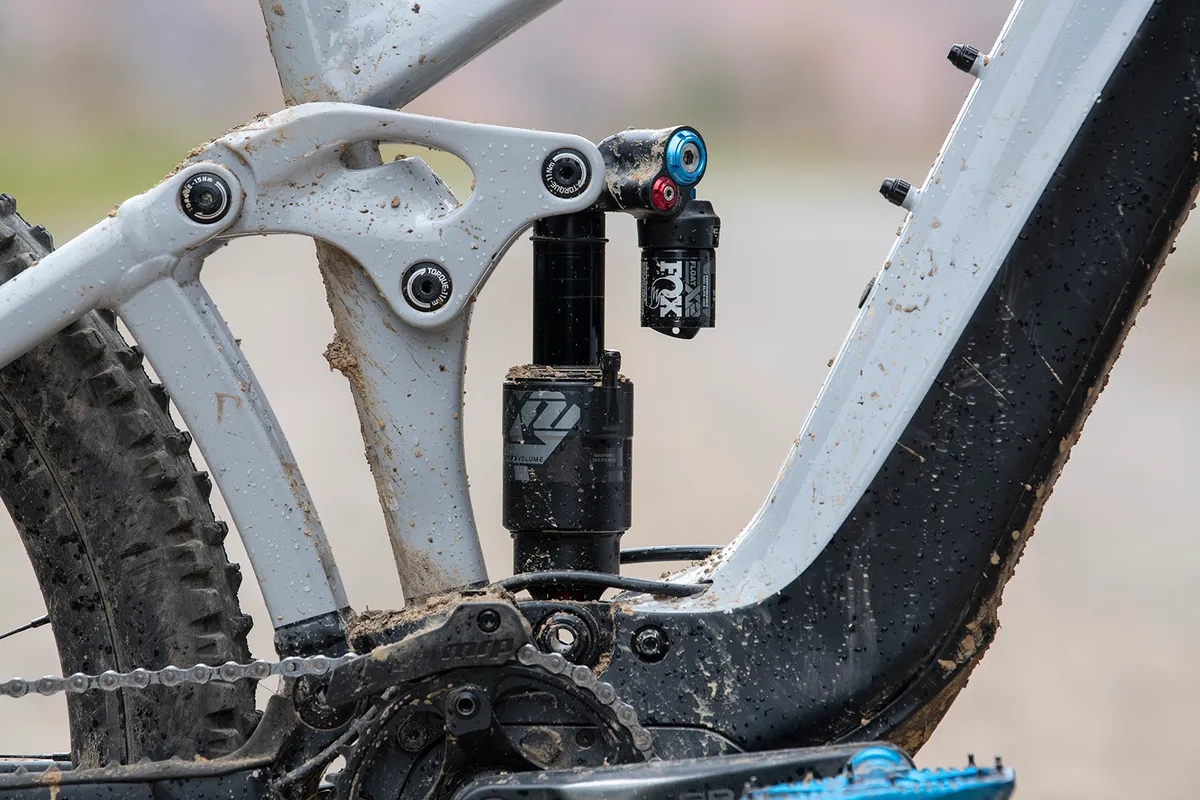
Although I inflated the tyres according to the conditions I was riding in, thanks to DoubleDown casing rear rubber I didn’t have to over-inflate them to improve carcass stability or reduce the chances of punctures.
The front EXO+ casing tyre was tough enough for the extra weight and speed demands of an electric bike.
After trying the bike in its low and high geometry settings, I eventually settled on the high position, preferring the more generous ground clearance from the higher bottom bracket (338mm high, 329mm low) and slightly steeper 63.5-degree head tube angle over the low setting’s 63 degrees.
Giant Reign E+ 1 climbing performance
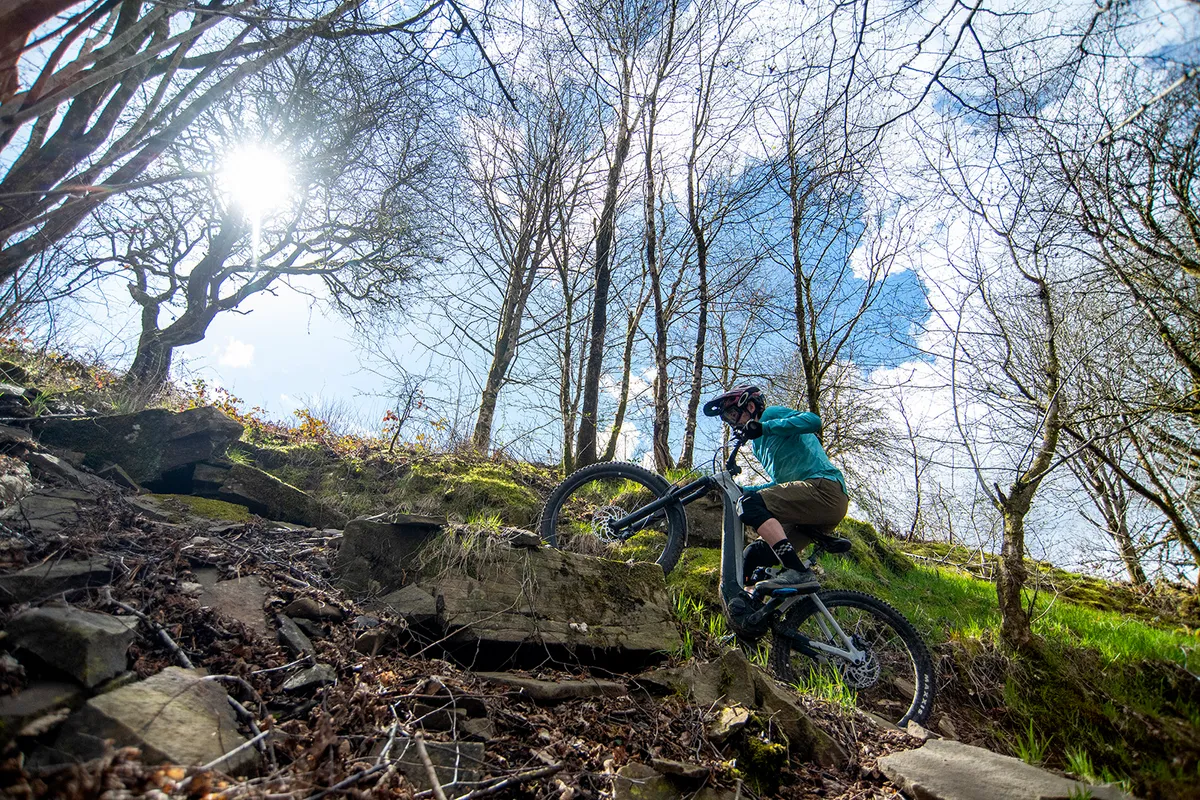
A steep seat tube angle dominates the Giant’s uphill feel, positioning my hips directly above the bottom bracket. In turn, this made me feel well centralised, with an even weight distribution between the front and back wheels helping generate traction.
The natural balance between front and back reduced the chances of wheelspin, especially when climbing seated. Its geometry made me feel quite upright, with most of my weight focused through my sit bones, further helping increase traction.
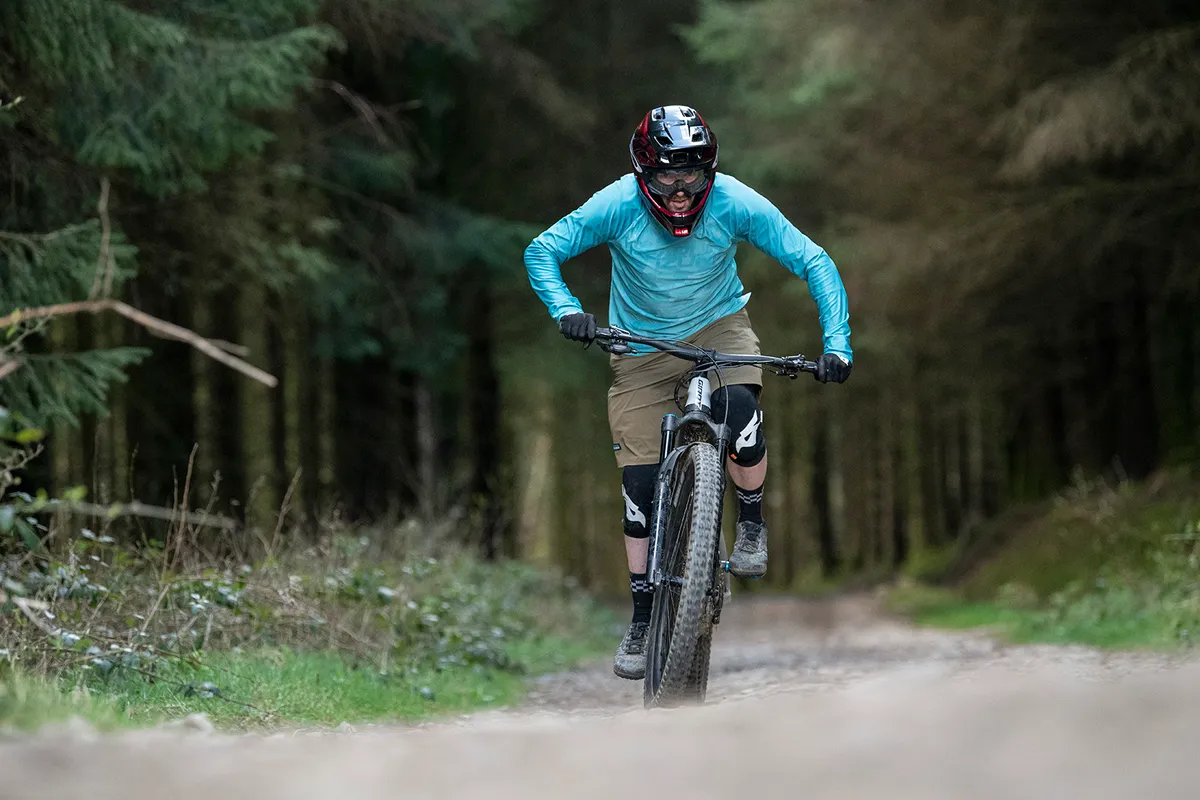
Thanks to the steep seat tube angle, I didn’t have to perch on the saddle’s nose or shift my weight forward dramatically to control the front wheel, a problem bikes with slack seat tube angles can suffer from.
Its geometry makes it a very relaxing and capable ascender, and this is backed up by the power the Yamaha motor offers.
In all bar its lowest mode, the Giant feels as if it has more power than Shimano’s EP8, sitting very close to Bosch in terms of grunt. This is amplified especially when setting off; the Yamaha feels keen to get going, but this caused wheelspin if I wasn’t careful.
When stationary and resting my foot on the pedal, it was possible to feel the motor surging and engaging as it sensed rider input.
This sensitivity meant it was quick to react on trail, but also caused it to offer very binary on or off power. This tended to detract from the ride somewhat and made controlling the bike tricky.
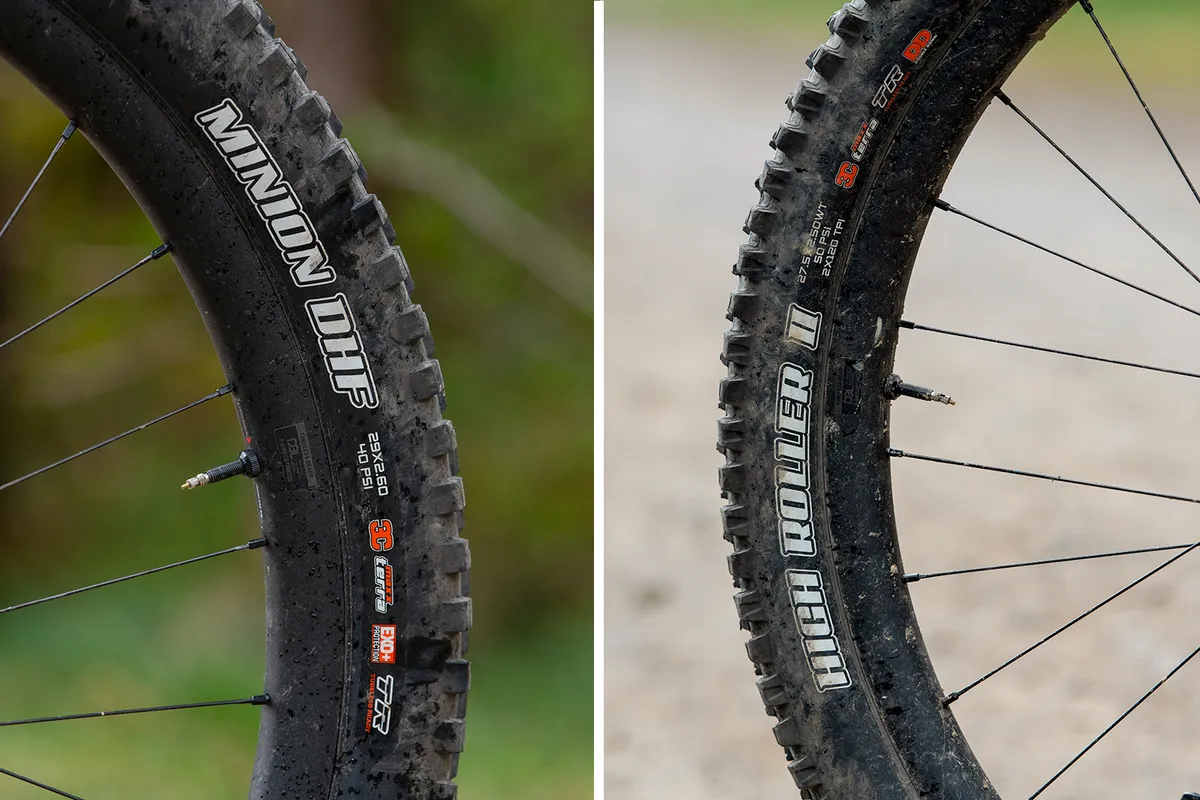
Maxxis’ High Roller II tyre has an aggressive tread pattern that digs into soft terrain well, and the 3C MaxxTerra compound offers a good balance between wear rate and chemical traction on greasy or slimy surfaces.
However, its 2.5in width is narrow and low in volume compared to other tyres of the same claimed size. Higher-volume rear rubber would be a better match to the motor’s power.
The rear suspension is fluttery over small bumps, but didn’t feel bottomless. Although there was no perceptible kickback when pedalling, thanks to 100 per cent or lower anti-squat values at sag in all gear ratios, the rear wheel tended to get hung up on certain bumps, especially as the bike got deeper into its travel.
The Giant is a true winch-and-plummet style ascender, best suited to reduced-effort fireroad slogs rather than tackling gnarly, slow-paced but high-energy technical climbs.
Battery life
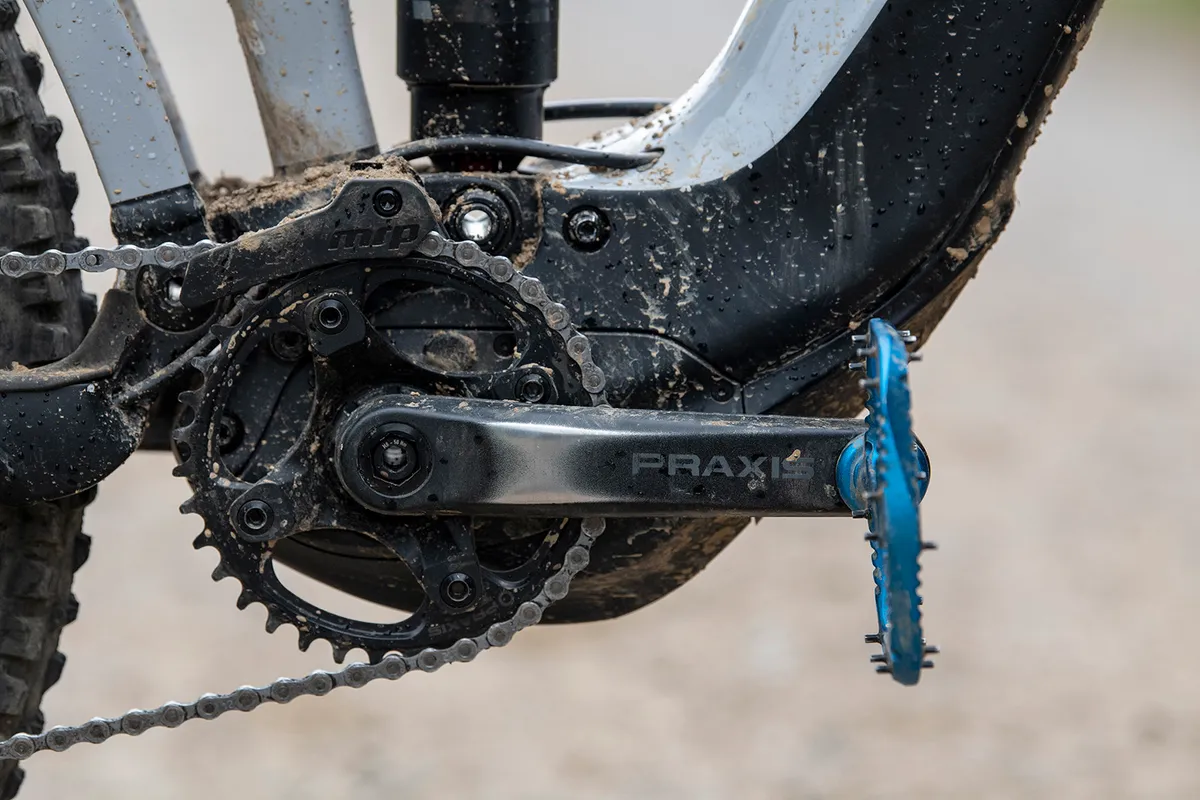
I struggled to get more than 1,700 metres of ascending from the 625Wh battery on a single charge, even when riding in the lowest support mode.
In the next support mode up – which felt akin to Shimano and Bosch’s trail setting, I generally managed 1,300 metres of ascending before the battery was depleted. This meant it was less frugal than the EP8 and Performance Line CX motors.
Giant Reign E+ 1 descending performance
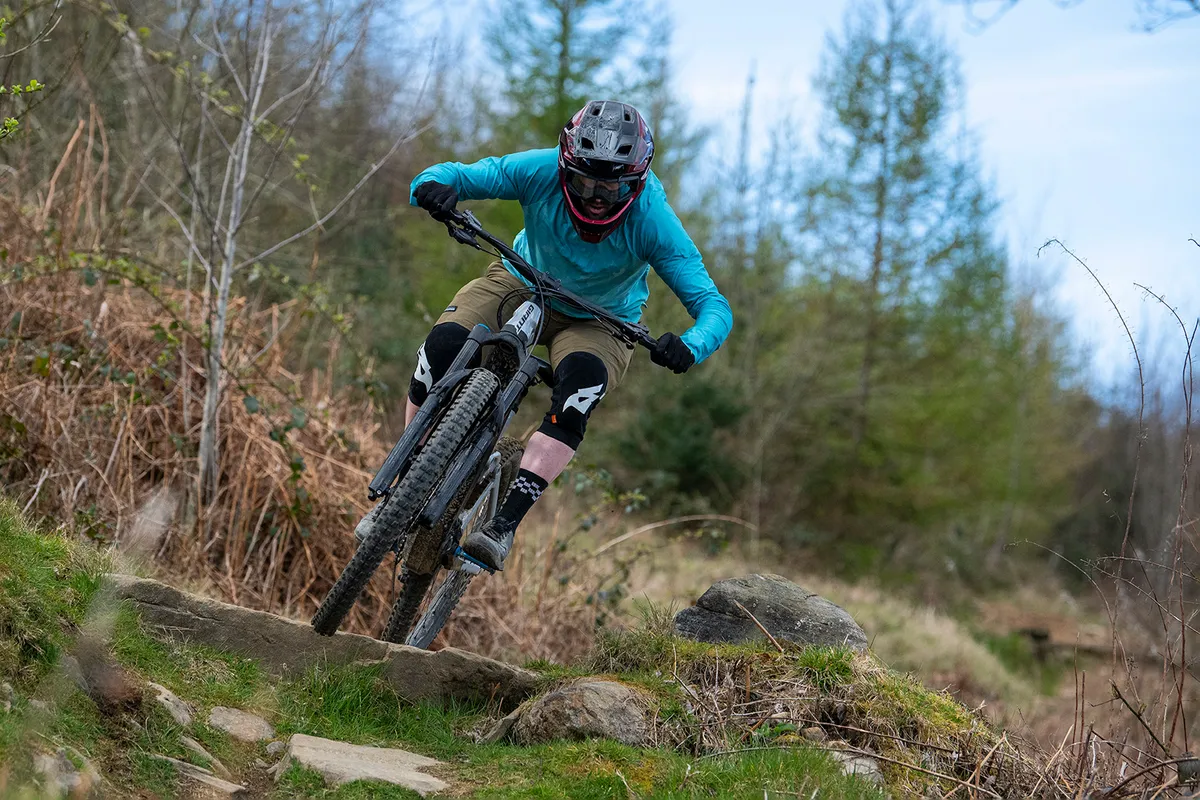
On the downs, the Reign is incredibly direct and taught, with rider inputs accurately and responsively transmitted to the bike’s wheels.
Changes of direction and line choice can be executed with surgical precision, but massive levels of self-belief and confidence are required to get it to those lines, a trait caused by two things.
Firstly, it can feel particularly stiff and harsh over bumpy terrain. If it wasn’t being ridden aggressively or with total intent, I found my hands fatigued quicker on the Giant than other bikes, such as the Whyte E-180. The Giant didn’t have the smooth-feeling ride I expected its 25kg-plus weight to give.
I was reminded continually of the bike’s stiffness down the trail as the wheels’ spokes twanged and pinged on every hard or harsh hit. The deep-profile rims and wheel build clearly accentuated its direct ride.
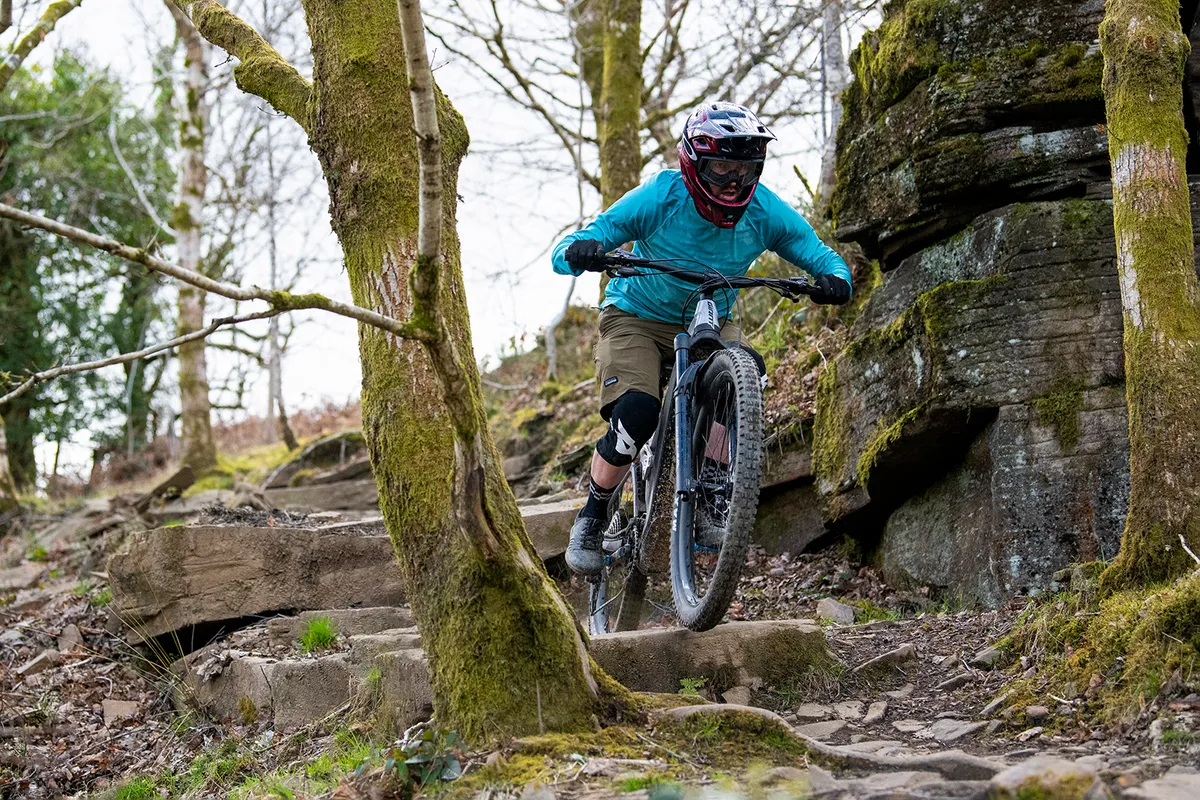
When ridden with total commitment, it was a true rocket ship, and hard, quick inputs translated to decisive direct changes in direction down the trail. Equally, its stiffness and weight helped it hold lines well, although one wrong weight shift tended to cause it to get shot off-line just as quickly.
Adding to its relatively harsh-feeling ride was its long and low geometry. The slackening of a bike’s figures is a positive in most scenarios because it helps improve control and stability.
However, when a long reach, slack head angle and long chainstays combine with a high weight figure, there appears to be a tipping point, where handling becomes sluggish and the weight too hard to manage.
This was the case with the Reign E+ 1 in the low geometry setting. I frequently struggled to get my weight far enough forward to drive the front wheel in turns or on technical sections, reducing my ability to control the bike.
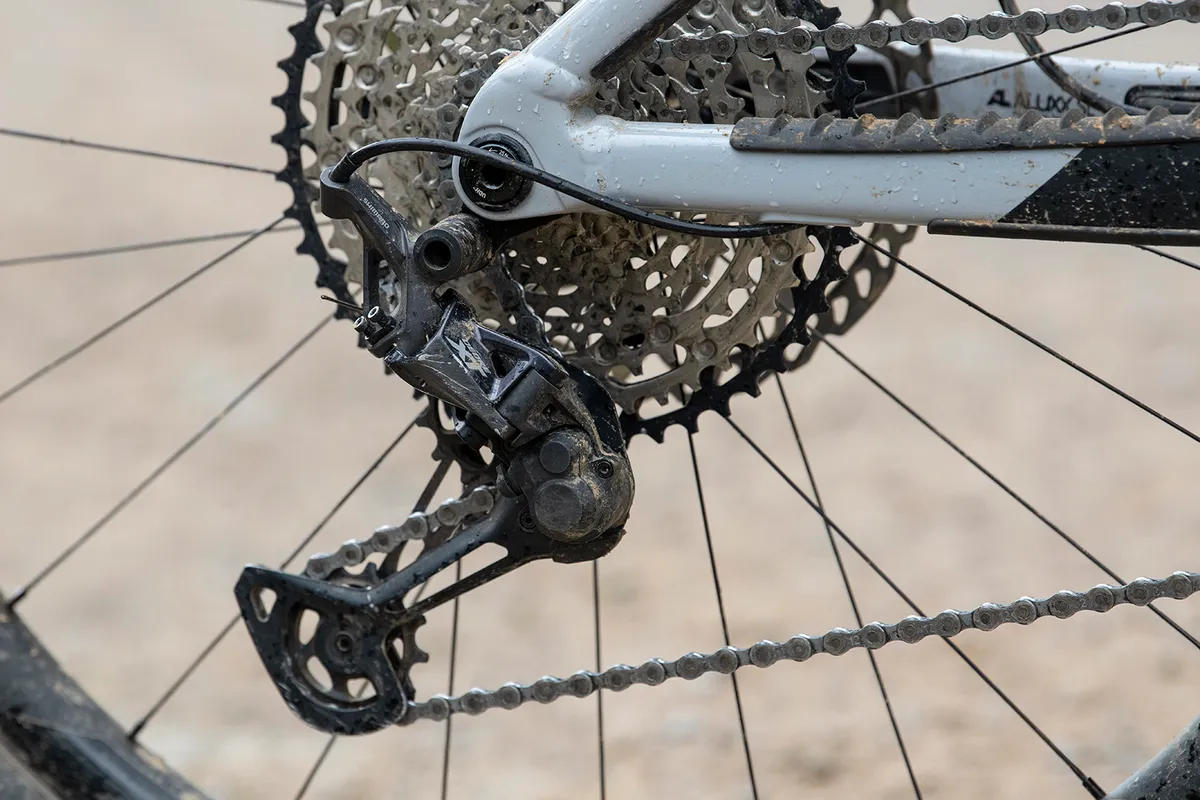
At times, it felt like a runaway freight train, where I was unable to muscle it back into shape and ended up hanging off the back.
Setting the geometry flip chip to the high position reduced the amount of commitment needed to get it to track a line, but I still needed to give it plenty of muscle to go where I desired.
This makes the Giant well suited to confident or heavier riders, who will benefit from its stiffness and generous geometry and are able to keep it in check.
Lighter or less experienced riders might suffer with the Reign galloping away from them down the trail. Riders of this type won’t enjoy the Reign as much as they would a bike such as the YT Decoy, with more conservative figures and a lower weight.
How does the Giant Reign E+ 1 compare?
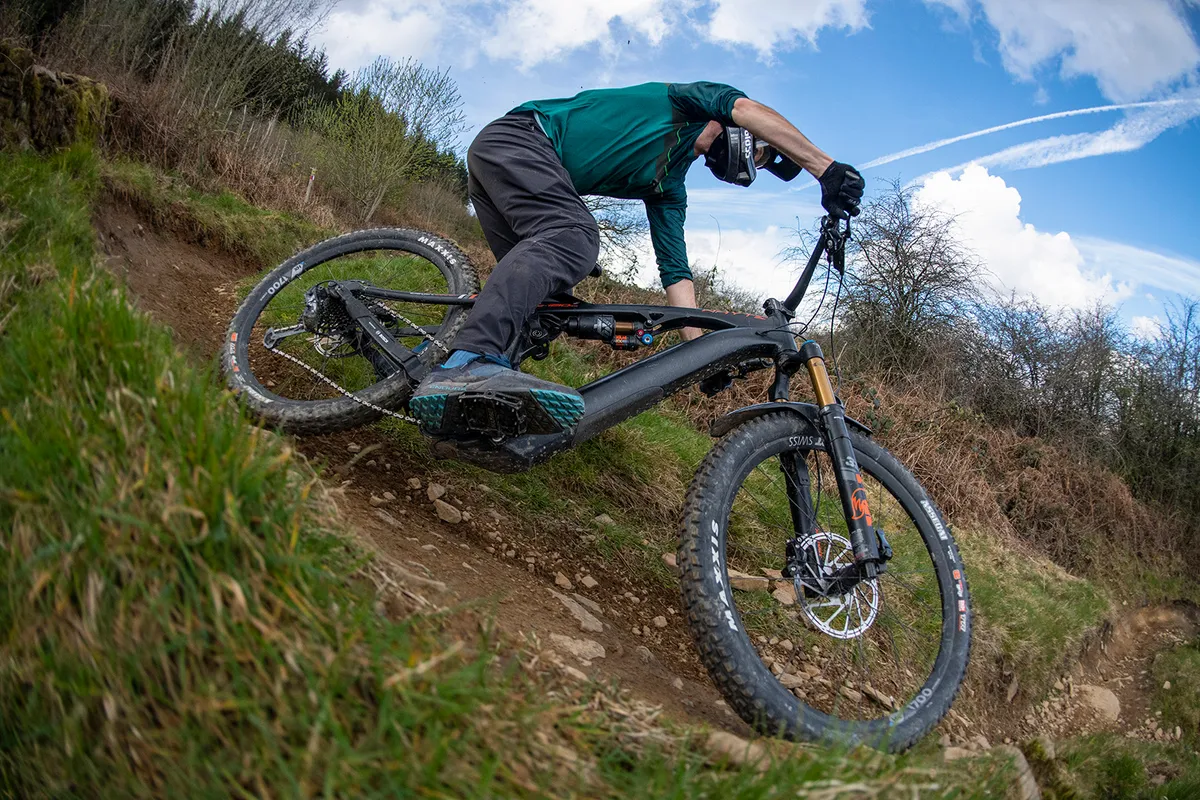
The Whyte E-180 and Reign E+ are similar in terms of geometry and weight figures, but the Whyte’s ride is significantly more forgiving, making it much less of a handful in choppy terrain; it’s easier to control and ride faster.
Although it’s tricky to pinpoint the cause of the Giant’s stiffness, it’s most likely to be a combination of frame construction, wheel build and handlebar stiffness.
Compared to the Specialized Stumpjumper Turbo Levo Comp Alloy, which has similarly slack geometry, the Giant falls behind in terms of how easy it is to ride, thanks to the Levo’s lower weight and softer-feeling ride.
While the Yamaha motor is peppy and appears eager to assist, this comes at the cost of battery life.
Despite battery capacity being almost identical to the Bosch and Shimano units on the Scott Ransom eRide 910 and Nukeproof Megawatt 297 Factory (XT) respectively, it was unable to provide as much range in real terms.
In fact, the Yamaha’s 625Wh battery has a similar range to the YT Decoy Core 4’s 540Wh unit when both bikes are used in their second assistance levels.
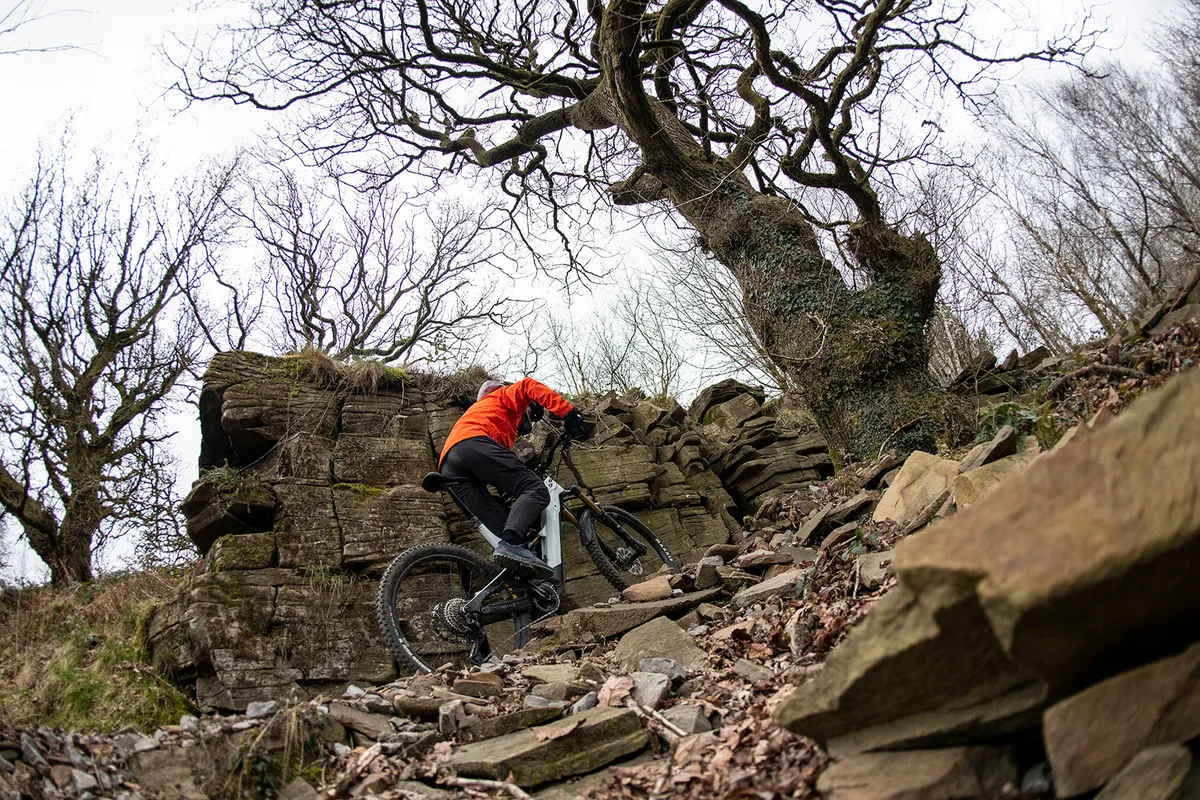
Although the Giant is well-specced for the price, with Fox’s Performance Elite dampers getting a notable mention, the Giant finishing kit isn’t as attractive as branded counterparts, despite performing faultlessly.
Giant Reign E+ 1 bottom line
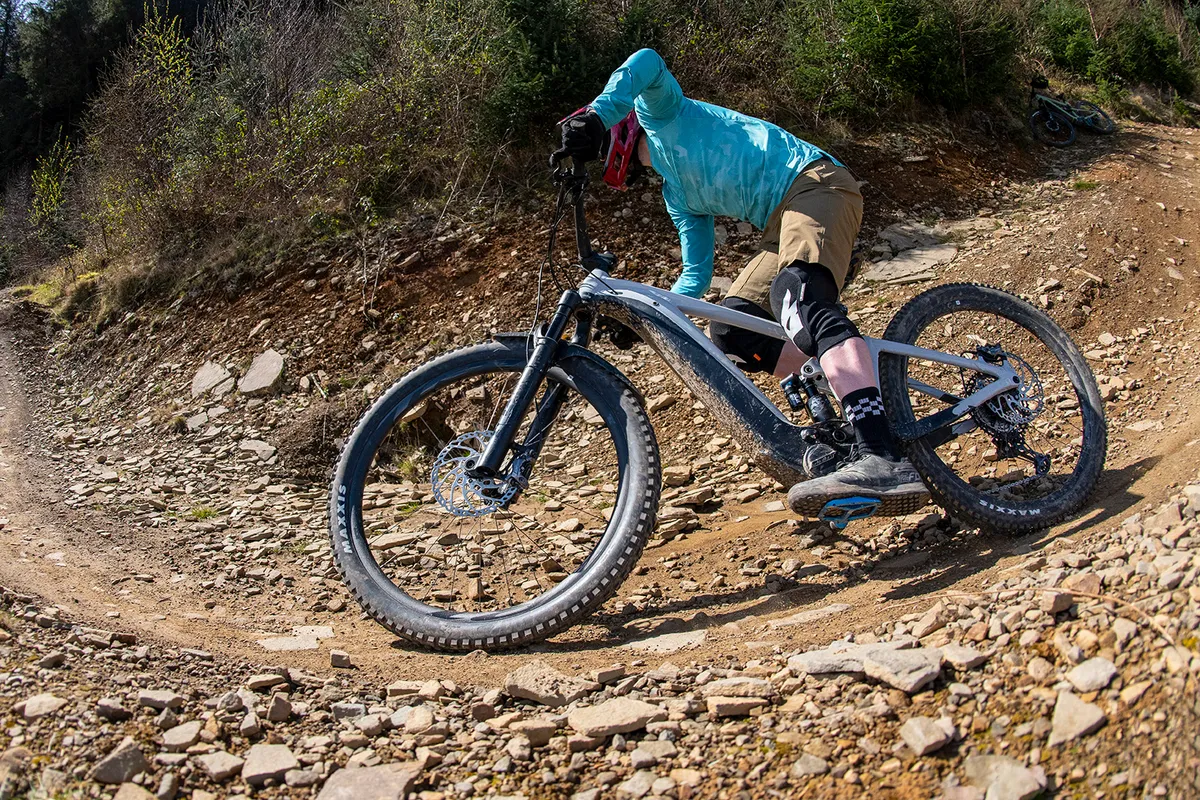
I was expecting the Reign to be a resounding success on the type of terrain its long, slack and low geometry has been designed for.
However, thanks to its stiff, taught build and high weight figure, muscling it down the trail proved to be tricky, especially when cruising. This made it unforgiving and fatiguing to ride hard all the time.
At full chat, it was devilishly quick and super-responsive to deliberate inputs, but the commitment required to get it to ride well wasn’t equal to the reward, where softer and more forgiving bikes achieved the same speeds with less involvement.
If you’re a heavier, faster or more committed rider, I’m sure you’ll get a lot from the Giant, but I can’t recommend it for lighter or less experienced riders – it’s just too much bike to muscle around.
How we tested
Despite this being the inaugural edition of eMTB Bike of the Year test, we’ve had plenty of experience testing ebikes to their absolute limits. That means finding out which of these eight bikes is the best electric mountain bike currently on sale was made a little easier.
Although that’s not say our job was simple, and choosing a winner came down to the wire where the second and first place bikes swapped positions more times than we checked our tyre and shock pressures.
The majority of the ebike testing happened in Scotland’s Tweed Valley, home to the legendary Glentress trail centre, Golfie enduro tracks and Innerleithen downhill runs. The terrain we tested the bikes on, therefore, was wide in scope and representative of what a modern enduro bike should be able to handle, whether that was gravity-fuelled laps on the DH tracks, epic enduro missions with long descents or gruelling trail rides with hours in the saddle.
To win this year’s test, we were looking for a bike that offered the best all round package with fewest compromises and was able to perform on every type of riding we could throw at it. In an ode to a bike tester’s cliché, it had to descend like a downhill bike, pedal and climb like a cross country bike and be as comfortable to ride as an enduro bike.
Our 2022 eMTB Bike of the Year contenders are:
Product
| Brand | giant |
| Price | 9799.00 AUD,6399.00 EUR,6299.00 GBP |
| Weight | 25.2300, KILOGRAM (L) - without pedals |
Features
| Fork | Fox 38 Performance Elite GRIP2 EVOL, 170mm (6.7in) travel |
| br_stem | Giant Contact SL 35, 50mm |
| br_chain | KMC E12 |
| br_frame | ALUXX SL-grad aluminium, 160mm (6.3in) travel |
| br_motor | SyncDrive Pro/EnergyPak Smart 625Wh/Ride Control Ergo 3 and RideControl GO |
| Tyres | Maxxis Minion DHF 3C Maxx Grip EXO+ TR WT 29x2.6in (f), Maxxis High Roller II 3C Maxx Terra DoubleDown TR WT 27.5x2.5in (r) |
| br_brakes | Shimano XT M8120, 203/203mm rotors |
| br_cranks | Praxis WaveTM, 36t |
| br_saddle | Giant Romero Trail |
| br_wheels | Giant e-TR1 |
| br_shifter | Shimano XT M8100 |
| br_cassette | Shimano SLX M7100, 10-51t |
| br_seatpost | Giant Contact Switch (dropper) |
| br_gripsTape | Giant Contact Pro-E |
| br_handlebar | Giant Contact Trail, 800mm |
| br_rearShock | Fox Float X2 Performance Elite |
| br_availableSizes | S, M, L, XL |
| br_rearDerailleur | Shimano XT M8100 (1x12) |
